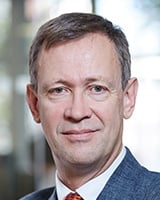Energy costs and ESG goals are pushing reducing network energy usage to the top of operators’ agendas
24 August 2022 | Research
Article | PDF (3 pages) | Wireless Infrastructure| Fibre Infrastructure
Listen to or download the associated podcast
Commitments to sustainability and environmental, social and governance (ESG) goals and the recent steep energy price rises are forcing operators to give more attention to their energy usage and costs. However, nearly every operator is also deploying 5G, which could use more energy than previous generations. Operators must therefore take a holistic approach to energy efficiency to avoid huge increases in energy spending.
This article is based on our report, Driving down energy usage across telecoms networks: 5G RAN and beyond.
Telecoms is an enabler of energy savings, but operators still have to ‘do their homework’. 5G is more energy-efficient than 4G, but adding 5G to existing networks will increase operators’ energy usage. The most effective strategy is to decommission legacy mobile and fixed networks. Sleep modes and intelligent power management can help, but are only half-way measures. Operators, vendors and policy makers should co-operate to eliminate less-energy-efficient networks, thereby saving energy costs and helping to achieve ESG goals.
Energy costs are mounting and operators need to think holistically
Telecoms networks (excluding data centres (DCs)) account for 1.5–2% of the total electricity consumption in developed markets. Operators can decouple energy usage from greenhouse gas (GHG) emissions to some extent, but most energy will continue to be bought in from the grid, with its mix of renewable and non-renewable sources. The cost of power is rising quickly, partly as a result of demand post-pandemic, but also, more recently, because of global conflict. It is set to continue to rise steeply in 2022 and probably into 2023.
Mobile RAN already accounts for over half of operators’ energy consumption. 5G requires additional active powered elements, and the number of these extra elements will rise steeply if/when massive MIMO (mMIMO) is deployed. 5G will also require additional cells. This will cause operators’ energy consumption to rise if there are no mitigating technologies or savings elsewhere.
At a time of green recovery programmes, operators are keen to present themselves as being on the side of the angels by pointing out how communications networks ‘enable’ reductions in energy consumption/GHG emissions. However, they must still give making energy savings across their networks a higher priority. Policy makers need to understand how great operators’ room for manoeuvre is and what trade-offs are involved in greening networks in order to achieve the desired outcomes.
Adding 5G without mitigating steps adds significantly to energy usage, even though 5G is more efficient than 4G on a watts-per-byte basis. Operators should consider their total network estate when developing strategies to reduce energy usage, not just the steps related to 5G deployment. The seriousness of energy costs and ESG goals requires a more holistic approach to energy than current approaches that leave these decisions to individual operating units. Figure 1 shows a range of possible outcomes in terms of energy usage across operators’ networks.
Figure 1: Energy usage per capita per year, typical developed economy mix, networks only (excluding CPE)

The most effective solutions are not limited to the RAN
Decommissioning copper and the active network equipment that uses copper is the biggest step that most operators can take to reduce their energy usage. Indeed, an FTTP line uses at least 80% less energy than a copper line. Decommissioning 2G or 3G and moving to a 4G/5G SingleRAN deployment also provide significant direct reductions in energy use.
Most operators are now integrated fixed–mobile players and have the tools to take a more holistic approach to balancing traffic across their networks (fibre versus FWA, Wi-Fi versus mobile). This reduces the pressure to build out mMIMO or additional cells, which require yet more energy. It is here, though, that potential energy savings run counter to commercial imperatives because the revenue of a byte transported over a less-efficient mobile network is higher than that of the same byte carried over a more-efficient network.
Some energy-saving technologies are more discretionary: advanced cooling, usage-sensitive networks (assisted by AI) and self-powering units. These technologies will be deployed on a selective basis because the capital cost of deployment has to be weighed against the benefits. As such, the benefits of these technologies will not be felt across the entire network. Some operators are also investing in powering their own cell sites and generating their own local renewable power, but taking out power purchase agreements on renewably sourced electricity is more secure and scalable.
Reducing energy usage cannot be brought about by operators alone; regulators and policy makers must also take it into consideration. They should support ESG policies by making it easier for operators to remove old technologies and for users to switch to more-energy-efficient options, and by encouraging, or even demanding, more energy-efficient networking from operators.
Our report provides the three following recommendations.
- Operators should build new networks that support the latest services and decommission legacy networks. This is the single most significant energy-saving step.
- Operators should implement energy-saving measures that go beyond the natural implementation of more-modern networks (such as smart power-downs of under-utilised networks, more-efficient cooling and self-generation of energy).
- Integrated operators should take a holistic view of where traffic is carried in the most energy-efficient manner, and policy makers should encourage them to do so.
Article (PDF)
DownloadAuthors


